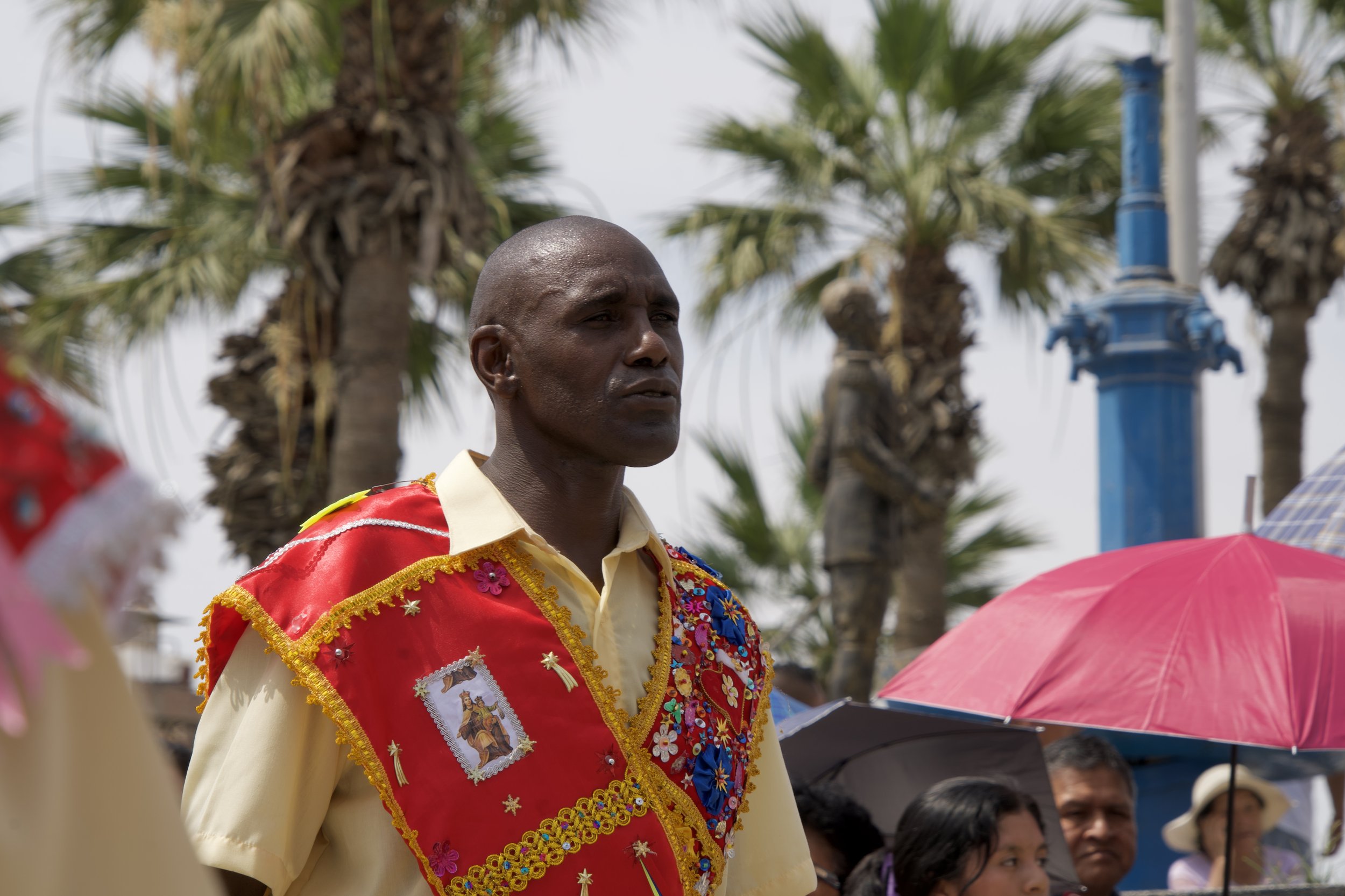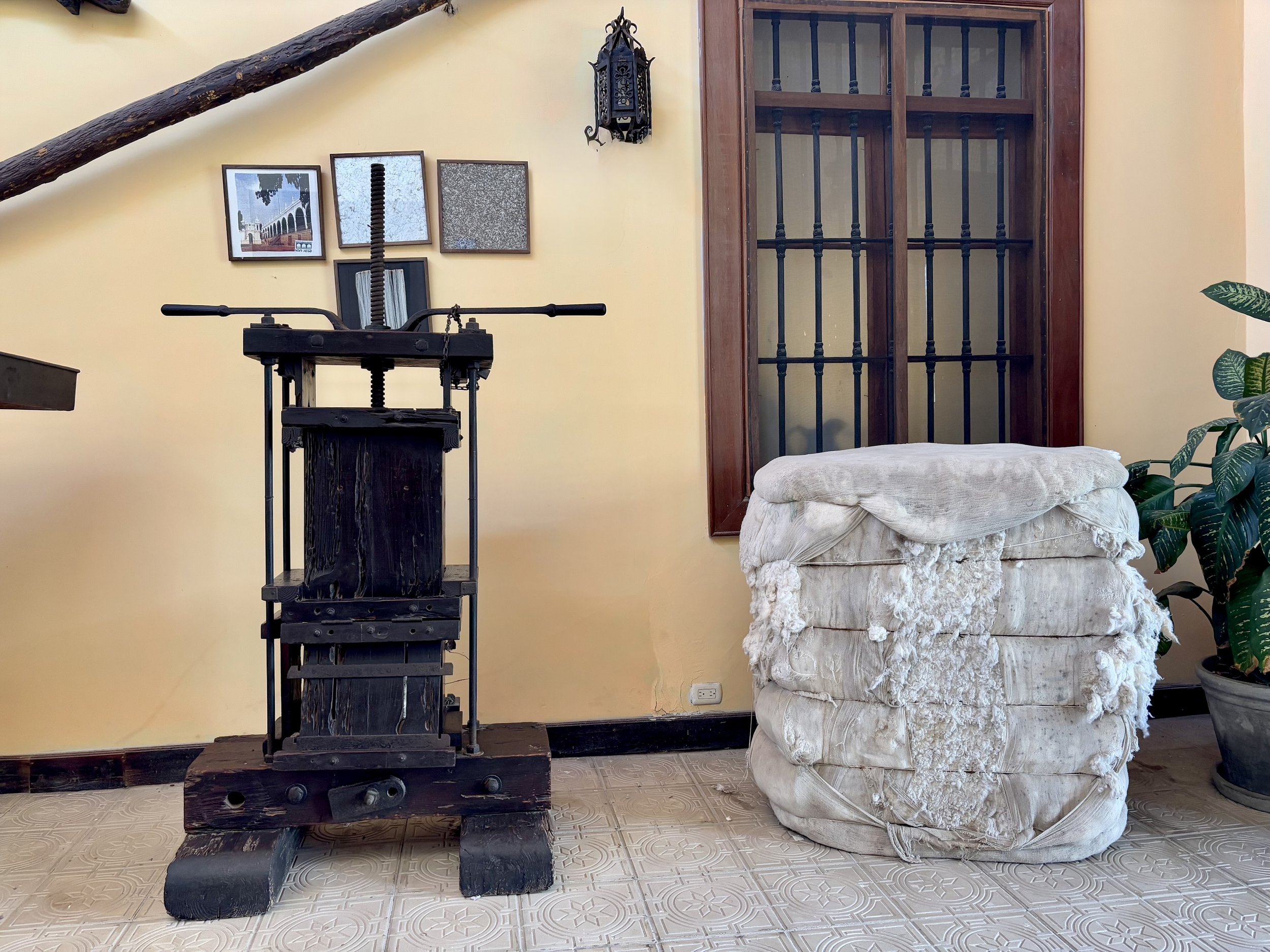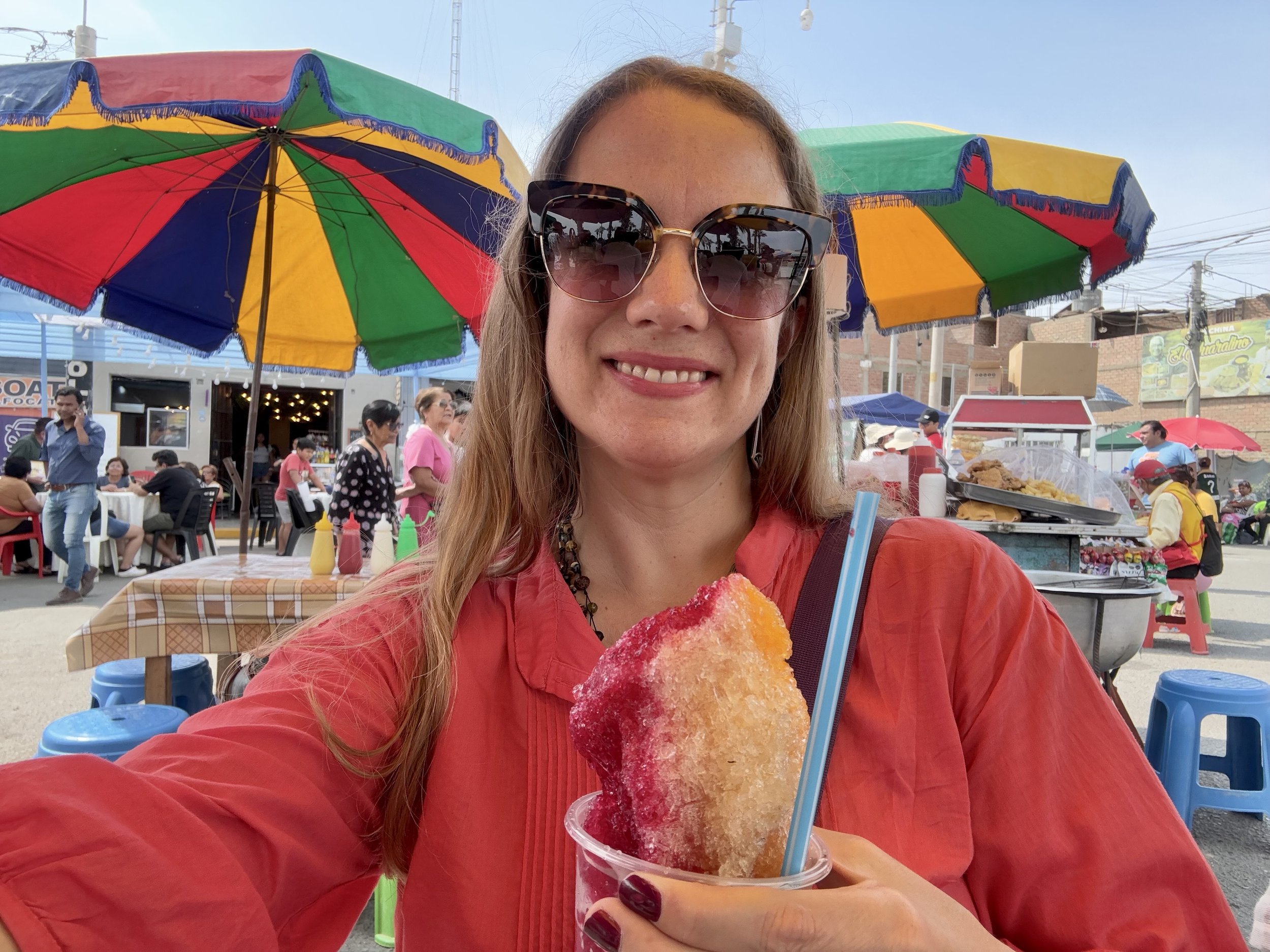Chincha, Peru
Zapateo is danced in a circle, with the leaders in the middle leading the singing and bell ringing..
I loved my visit to Chincha, which is on Peru’s coast just north of Paracas.
I planned my trip for January 6thbecause the town’s Afro-Peruvian Epiphany celebrations are famous. Chincha is one of the few places in Peru that still has a strong Afro-Peruvian culture.
Best things to do in Chincha
See Zapateo in Chincha
The best part of Epiphany in Chincha was seeing several different dance groups, called comparsas, dance zapateo in the main square. Zapateo has roots in dances that came to Peru with the enslaved Africans brought by Spanish colonists. Dancers are always accompanied by musicians and the first thing you’ll notice about the music is a high-pitched violin reminiscent of North African stringed instruments.
Many zapateo dancers sew an image of the Virgin of Carmen on their sashes.
Each comparsa has its own outfit, generally matching shirts with the comparsa’s name embroidered on the back, slacks and black leather dress shoes. They also wear two sashes, one over each shoulder, with colorful ribbons and the image of the Virgin of Carmen sewn on the front and back, like the scapularies worn by devotees to the Virgin of Carmen. (Read about Paucartambo’s Virgin of Carmen devotees on this blog).
No expense was spared when building Hacienda San José, including importing this mahogany billiards table.
Visit Hacienda San José in Chincha
The best place to learn about Chincha’s colonial history is at the Hacienda San José. It’s a beautiful hacienda, with a very interesting, guided tour. The tour starts with how extravagant the place was when it was built: ceilings made with imported Oregon pine, a massive billiards table of mahogany, and even tunnels for the hacienda’s owners to hide from pirates during raids.
Tunnels at Hacienda San José
Pirates weren’t just in the Caribbean. They targeted rich haciendas along the Peruvian coast so often that the hacienda owners built tunnels to hide themselves and their money.
Then you learn that all this wealth was acquired through slavery.
Spanish colonizers brought enslaved Africans to Peru to work in the vineyards, cotton fields, and mines. At Hacienda San José they mostly picked cotton, though plenty of other slaves in the region were forced to pick and stomp grapes for wine and pisco production. Those sent to the mines faced the worst conditions of all. (In July I’ll visit Acarí, south of Chincha, to learn more about slavery in mines).
Cotton for export
Most of the cotton grown in Peru, and picked with slave labor, was exported to Europe.
After declaring independence from Spain in 1821 (and the 1824 Battle of Ayacucho), various Peruvian constitutions outlawed slavery. Finally, in 1854 the government bought the freedom of every enslaved person in Peru, ending slavery once and for all. Curiously, it was government funds raised selling guano from the Ballestas Islands that was used to pay off all the slave owners.
San Martín de Porres
This Peruvian saint was the first saint of African heritage in the Americas.
The tour ends at Hacienda San José’s chapel, which has a statue of Saint Martín de Porres. He was a Dominican monk with African heritage who was beatified in 1837 and canonized in 1962, making him the first saint of African heritage in the Americas. The chapel is beautiful and full of religious paintings from the 19th century.
The hacienda’s signature cocktail
I would have enjoyed the hacienda’s pisco cocktail more if I actually liked pisco.
Since I was with Destinos Ica, I also got an extra tour of the saloon. My guide showed me how to mix the hacienda’s signature pisco cocktail, which was a bit strong. I hadn’t yet learned the trick for drinking pisco, which came with my tour of the Caravedo distillery.
The history of slavery
The evidence of slavery is horrifying but I’m glad it’s included in the tour, rather than ignored as if the roots of Chincha’s African heritage could be glossed over.
I was left with a lot of questions after the tour and wished that the guide had gone into more depth on the experience of enslaved people at the hacienda, but I get that’s not a popular topic. If I were to generalize, I’d say that international tourists in Peru want to learn about the Inca and those who come to Chincha are really there to taste wine and pisco. Afro-Peruvian history and culture is considered niche and doesn’t get much promotion or interest.
I’m planning a few other trips in Peru this year to learn more about Afro-Peruvian culture and history, so stay tuned! The best way to find out when I post a new blog is to subscribe to my newsletter.
Tour the Alcázar Abdala
One of the most unique places in Chincha is Alcázar Abdala, a house that’s also a museum, a shrine to the builder’s father, and the biggest assortment of antiques I’ve ever seen. A guide took me through the house, where each thematic room is full of antiques. The house itself is even made with antiques: doors, windows, furniture and even floorboards are rescued from 17th and 18th century buildings that are being demolished or remodeled. Even the gardens and courtyards are full of antique sculptures and fountains.
Alcázar Abdala also has a collection of regional pottery, including from the Chincha civilization.
Chincha History
The town’s name comes from the Chincha culture, which flourished in the area from the 12th century to the mid 15th century. The Inca Pachacutec conquered the Chincha people, but the area wasn’t fully absorbed into Tahuantinsuyu until the Inca Túpac Yupanqui’s expansion work on the coast.
The Chincha lived mostly from the sea, fishing and gathering shellfish, and had one of the strongest pre-Inca trading economies in the region. Archeologists have found a lot of Chincha ceramics, which are characterized by large vases with wide necks, and objects shaped like sea birds and coastal mammals. They painted their ceramics in black and white on a red background.
What else to see in Chincha?
Huaca la Centinela
Near Chincha Baja, you should visit Huaca la Centinela, an ancient adobe pyramid built by the Chincha as early as the 10th century. Also called Chinchaycamac, it has walls built with images of fish and marine birds in relief, similar to the adobe walls of the Huaca de la Luna in Trujillo.
Santuario Melchorita Saravia
On the north side of Chincha is the Santuario Melchorita Saravia, where you can see offerings from local people who credit her with all kinds of miracles. She was a Franciscan nun, born in Chincha, who lived from 1895 to 1951. She dedicated her life to helping the poor and sick, and most of her miracles involve healing.
Carapulcra is the most traditional dish in Chincha: a thick pork stew served with chicken, pasta, and fried yuca.
How to get to Chincha?
On maps you’ll see it’s also called Chincha Alta, differentiating it from Chincha Baja, a much smaller town that’s southwest of Chincha Alta. It’s about three hours south of Lima, but most people visit as a side trip from Paracas or Ica.

















